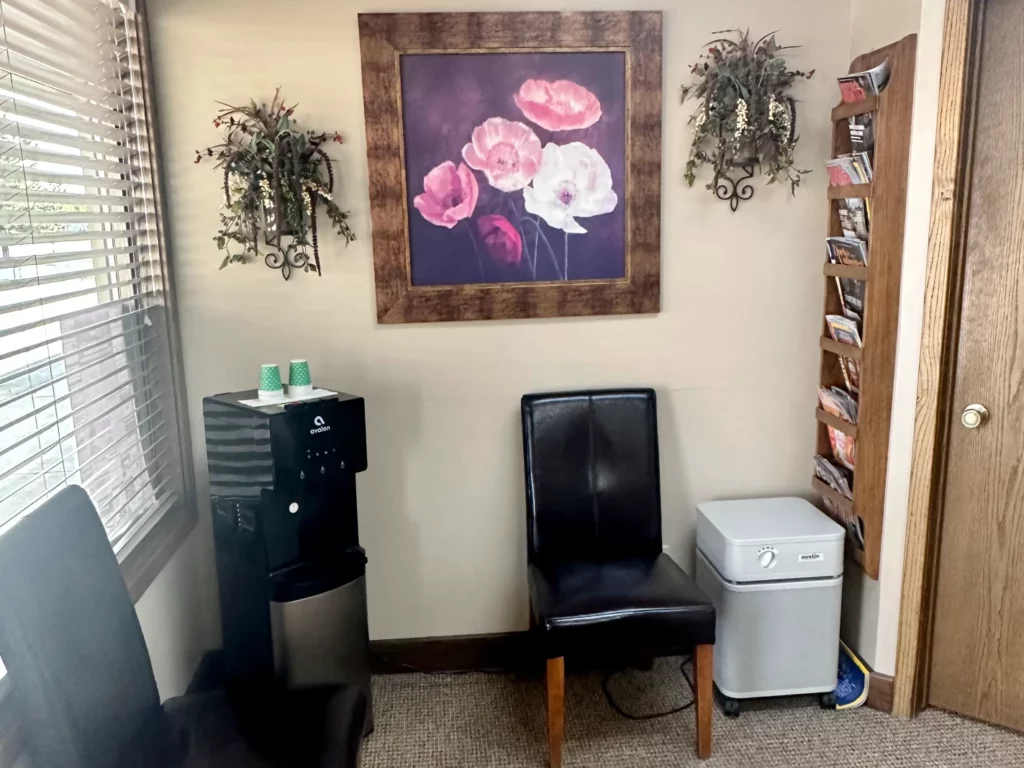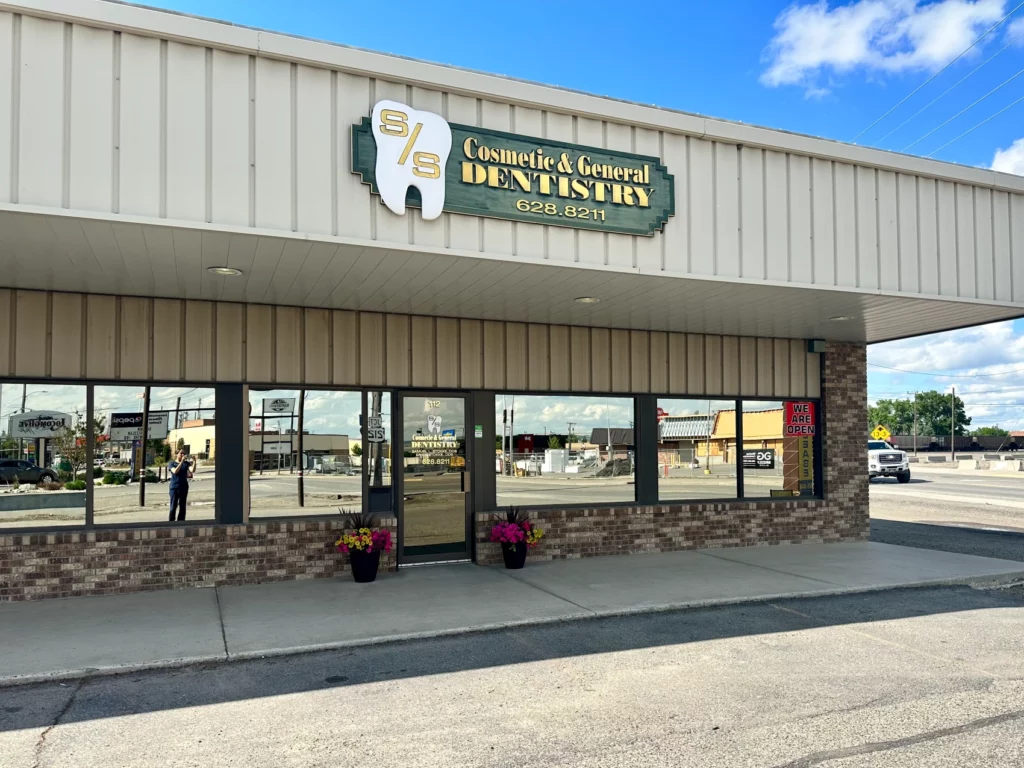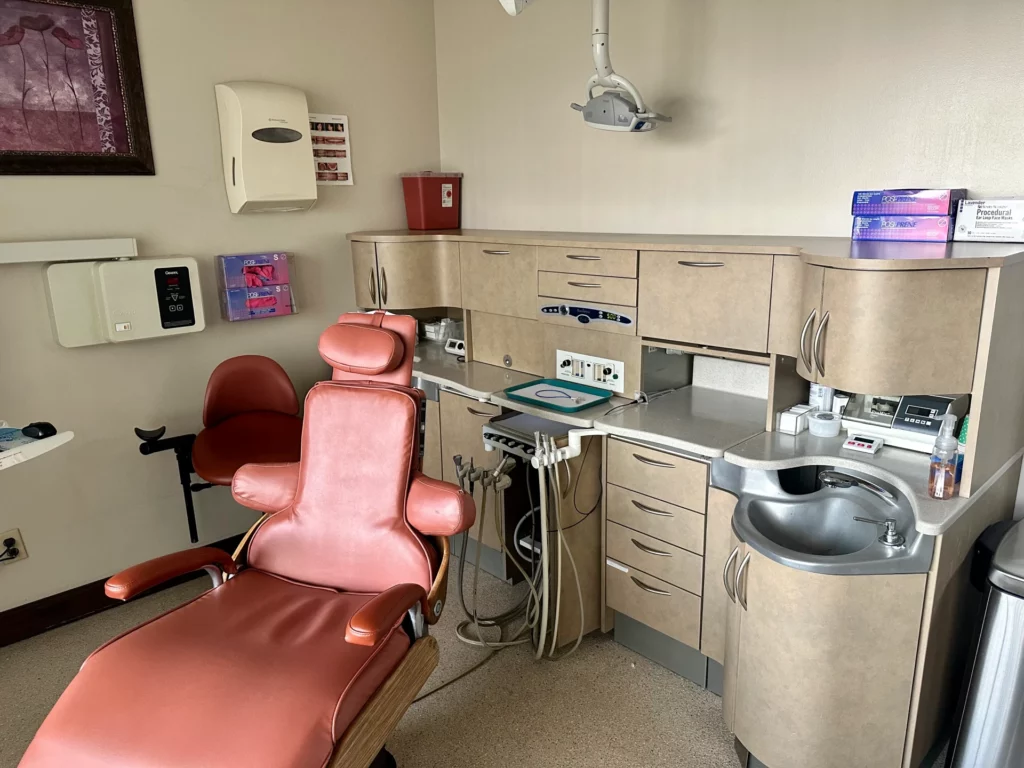- Our Practice
- ServicesAAFE-CERTIFIEDADV. TRAININGADV. TRAININGAAFE-CERTIFIEDADV. TRAININGADV. TRAINING
- For Patients
- Insurance & Financing
- Contact
A root canal is a very common dental procedure performed in order to help save your natural teeth and prevent the need for dental implants and bridges.
At the center of each of your teeth is the dental pulp (tooth nerve). Infection of the dental pulp can be very painful and is caused by a variety of factors including: trauma, deep cavities, cracks in the tooth, or repeated dental procedures.
If you do find yourself with a painful toothache, we encourage you to call our dental office right away. An infected tooth that is not treated can only result in bigger problems. Contact Stokke Family Dentistry at (406) 628-8211 for prompt and comfortable emergency care.
Symptoms of a root canal infection or inflammation can vary from person to person. Here are some common symptoms:
It’s important to note that not all root canal cases exhibit obvious symptoms. Sometimes, an infection or inflammation may develop without causing noticeable discomfort. Regular dental check-ups and X-rays are essential for early detection and treatment of potential root canal problems. If you suspect you may need a root canal, give us a call or schedule an appointment online today!
The purpose of a root canal procedure is to save a tooth that is severely infected or inflamed. When the pulp, which is the soft tissue inside the tooth containing nerves, blood vessels, and connective tissue, becomes infected or damaged, a root canal is performed to remove the infected pulp and alleviate pain or discomfort.
The root canal procedure eliminates the source of infection or inflammation, saves the natural tooth, and relieves pain or discomfort. It also helps prevent the spread of infection to neighboring teeth and protects your overall oral health. With proper care and maintenance, a tooth that has undergone a successful root canal procedure can last for many years.
Symptoms of a root canal infection or inflammation can vary from person to person. Here are some common symptoms:
It’s important to note that the exact steps and techniques involved in a root canal procedure may vary depending on your individual case.
There are several signs that may indicate you need a root canal, including:
If you experience any of these symptoms, it’s important to give Stokke Family Dentistry a call as soon as possible. Dr. Stokke will examine your tooth and determine if a root canal is necessary to save the tooth and prevent further complications.
If you’re looking for a root canal dentist near you, you’re in the right place! Dr. Stokke is highly experienced in root canals and is conveniently located right here in Laurel, Montana. We reserve space on our schedule for emergency dental appointments, so if you need an emergency root canal near you, we’ll make sure to get you in ASAP!
After an emergency root canal procedure, it is normal to experience some pain and discomfort for a few days. However, there are several things you can do to manage your symptoms and promote healing:
If you experience severe pain, swelling, or bleeding after a root canal procedure, or if your symptoms do not improve after a few days, please contact Stokke Family Dentistry and we will address your concerns right away.
Root canal recovery time can vary depending on the severity of the infection, the complexity of the procedure, and the individual’s overall health. In general, it’s common to experience some pain and discomfort for a few days after the procedure.
Most people are able to return to their normal activities, including work or school, within a day or two after the procedure. However, it is recommended to avoid strenuous physical activity for a few days and to eat soft foods to avoid putting pressure on the affected tooth.
Common symptoms of root canal recovery include:
In most cases, the tooth will feel completely normal within a few days to a week after the root canal procedure. It’s important to attend follow-up appointments to ensure proper healing and to address any concerns or issues that may arise.
A root canal crown, also known as a dental crown, looks like a natural tooth and is typically made of ceramic, porcelain, or a combination of materials such as porcelain fused to metal. The crown is placed over the remaining portion of the natural tooth after a root canal procedure to protect the tooth and restore its shape and function.
The crown is custom-made to match the shape, size, and color of your natural teeth and is designed to blend in seamlessly with your smile. Dr. Stokke will take impressions of your teeth to ensure that the crown fits perfectly and looks natural.
Root canal crowns typically cover the entire tooth, from the gum line to the top of the tooth. They are often used to restore damaged or decayed teeth or to protect weak or cracked teeth from further damage.
Once the crown is placed, it is cemented onto the remaining portion of the natural tooth and becomes a permanent part of your smile. With proper care, a root canal crown can last for many years and provide a natural-looking and durable solution for restoring your smile.
After a root canal procedure, Dr. Stokke will examine the strength of the remaining tooth structure to determine if you need a filling or a crown.
Root canals on posterior teeth (molars in the back of your mouth) will require a dental crown.
Avoiding a root canal involves maintaining good oral hygiene and taking care of your teeth and gums. Here are some hygiene tips that can help you avoid a root canal:
By following these hygiene tips, you can help prevent the need for a root canal and maintain a healthy smile.
While root canal procedures are often the best option for saving a severely damaged or infected tooth, there are a few alternatives to root canals that may be considered depending on the individual case. These alternatives include:
It’s important to note that while these alternatives may be considered in some cases, a root canal is often the most effective way to save a damaged or infected tooth and prevent the need for an extraction. If you’re experiencing dental pain or other symptoms, please call Stokke Family Dentistry right away and Dr. Stokke will be able to determine the best course of treatment for your individual case.
Many people ask if root canals are painful. The answer is that while the procedure itself is not painful, some patients may experience some discomfort or sensitivity during or after the procedure.
During a root canal procedure, Dr. Stokke will numb the area around the affected tooth with a local anesthetic. This helps to prevent pain during the procedure. Some patients may feel a slight pressure or vibration during the procedure, but it should not be painful.
After the procedure, it is common to experience some discomfort or sensitivity in the treated tooth for a few days. This can usually be managed with over-the-counter medications, such as ibuprofen or acetaminophen. Dr. Stokke may also prescribe medication if necessary.
Overall, while a root canal procedure may be uncomfortable or cause some sensitivity, it should not be painful. The benefits of saving a damaged or infected tooth through a root canal procedure far outweigh any temporary discomfort.
Our patients are our biggest fans. Here are a few highlights from our public reviews.
Monday
8:00AM – 5:00PM
Tuesday
8:00AM – 5:00PM
Wednesday
8:00AM – 5:00PM
Thursday
8:00AM – 5:00PM
Friday
8:00AM – 5:00PM
Saturday
CLOSED
Sunday
CLOSED
We are happy to help you book an appointment or answer your questions. Please fill out our contact form and we will get back to you shortly!


